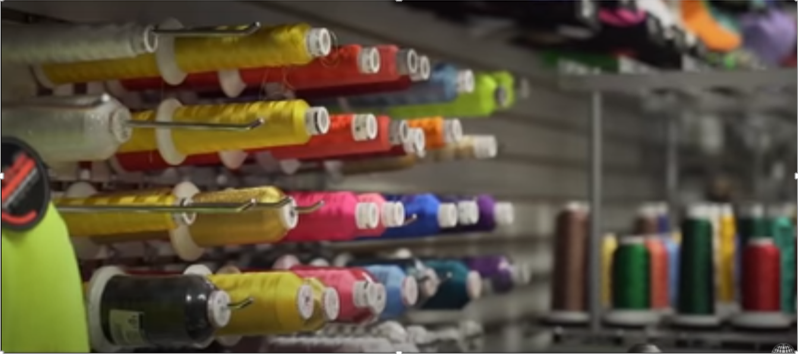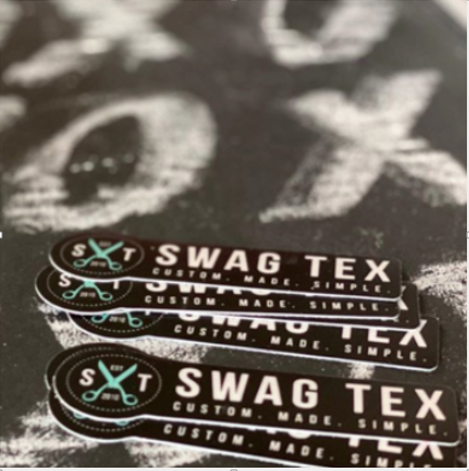Source: Swag Tex
Worldwide people have a certain craze for traditional needlework, and some people like to create art. These artists have the enthusiasm of converting their artwork into embroidery but do not have `the knowledge of the technique and process of converting their artwork into an embroidery design. You get a high-quality finish with an embroidery design that is long-lasting and looks professional and smart. An embroidered design can withstand washing and sometimes may last longer than the garment. The question arises of what you can do to make sure that you get the best embroidery and avoid any kind of mismanagement.
Embroidery has formed an essential part of cultures, and cultures have different types of embroidery. It can be done on any form of apparel, home goods, or patches. Embroidery is done to either decorate apparel or as a sign of the brand logo. You have a range of colors, stitches, and patterns to select to make your design. Embroidery can be done on different garments such as workwear, fashion, or sports. It adds class to your apparel and can act as a symbol of exclusivity.
Tips to get best embroidery design
Embroidery adds a classy touch to your apparel and elevates the product above other promotional items. There are certain secrets of embroidery which need to be taken care of to ensure the best embroidery qualities, which are mentioned below:
- A simple design should be used as stitching requires a thicker line as compared to printing.
- A design should be of standard size. If you decide ‘Go big or go Home’, then defiantly your go home in case of embroidery. To make your design aesthetically pleasing to the public, we take care of the line and letter spacing. The basic rule to follow in font selection is never to use more than three fonts in a single design. We prefer to have your letter or text more significant to make your brand stand out more and in the best detail possible.
- The correct usage of fabric is important in getting the best embroidery. If embroidery is done on cotton or lighter fabrics, it will become unwearable after a single wash. The best fabric for embroidery by design is outerwear, denim, and mostly knits.
- When converting your artwork into embroidery, the design should not be overly detailed and should contain less text.
- When getting your embroidery from the art design, getting color consistency is critical. We make sure that color inks match the hues and shades of your requirement. We take great care of color consistency while printing your artwork.
- Ideally, you should upload vectors file or scan artwork, making your file of the finest quality. Swag Tex would provide help in creating a vector file and printing your artwork in high resolution.
Process of converting the design into a file
What are Vector and Digitizing?
A vector image is computer graphics defined in terms of points on a Cartesian plane, which are connected by lines and curves to form multiple shapes.
Digitizing is the conversion of information into a digital format. Converting artwork into stitches or embroidery files using embroidery software is called embroidery digitizing. The embroidery files give series of commands to the machine on how to stitch your artwork.
Your artwork needs to be converted into a vector or embroidery file. Swag Tex provides help and consultation in digitizing your artwork or converting your image into a vector format.
As you are now aware of what a vector is and what digitizing means, we will move towards explaining the process of making an embroidery file from your given artwork.
Step 1: Outline
Firstly, you need to create an artwork, and for that, you do not need to be an artist. It can be as simple as tracing. You just need to trace the outline of the artwork with care and attention that no distance is left between the lines. Using software to create your artwork is the best technique to produce an outline or initial artwork.
Step 2: Vectorizing
When creating an embroidered artwork, vectorizing is an essential step. The foundation of the embroidered file, which is a digital file, is built; this type of file is called vectors. A vector is vital in making a logo design. You can directly upload a vectors file (if you have one), or else you can skip ahead and submit. AI or.SVG file. If. JPEG or. PNG file is in high resolution; then, you can also submit the file in this format.
Step 3: Embroidery Digitizing
The next step is to create stitch files for your design, crucial in an embroidered artwork. The locations, density, speed, and angle of each stitch have to be specific to be added in specialty software. Swag Tex has a team of a specialized team of digitizers.
Step 4: Sampling
Swag Tex produces premium quality products and provides you samples before printing. An embroidery file is shown in a virtual mockup by specialized software. Swag Tex makes sure that you are part of the design process.
Step 5: Transferring image to the fabric
Once the vectorizing is done, and stitch files are created, samples are shown; in the next step, the image is transferred to the fabric. The following step is critical as the type of stitching is selected, and the embroidery process is completed.
Step 6: Type of stitches
You can choose from four embroidery options,
- Monogram: It is a motif of initials that are used to show possession and add decoration to the apparel.
- Puff: It is made with the addition of a piece of foam, which gives the embroidery a raised or 3D appearance.
- Appliqué: This embroidery technique involves layering fabric patches on a foundation fabric, then stitching in place by machine; the raw edges are then covered with decorative stitches.
- Chenille: It is a special kind of loop or chain embroidery made from yarn, which makes the design look optically thicker and more convex.
Fabric and thread are used in embroidery.
Source: Swag Tex
The embroidery technique is used to define which fabric to use; multiple fabrics can be used in embroidery, which has different thread counts and can be in pure cotton, linen, or a blend of different fabrics. Some of the fabrics for best embroidery are:
- Evenweave Fabrics: This fabric is tightly woven and has the best surface for embroidery. Cotton, rayon, linen, polyester blend, bamboo, and hemp are the fabric content of even-weave fabrics. These fabrics are available in all colors and have a thread count ranging from 18-32 fine count.
- Aida Cloth: This fabric is made of grouped fibers, which form the easy-to-count square pattern. Surface embroidery and Assisi embroidery techniques work best with Aida cloth. Solid colors range is available in Aida cloth; there are also background patterned, printed, or textured varieties. It has a fiber count range from 11 – 22 count, and rayon, linen, and cotton fabrics are available in this type of fabric.
- Hardanger Fabric: It is a double thread woven fabric that is 100% cotton with 22-count thread. This type of fabric has a limited selection of colors.
- Toweling: It is a wide range of by-the-yard and ready-made toweling and can be used in retro and contemporary projects.
Embroidery is a tactile art and requires extreme care. There is a wide range of threads that can be used to do embroidery, some of the threads are mentioned below:
Cotton Embroidery Thread
There are three types of cotton embroidery thread;
- Stranded Cotton: It comes in skeins which are divisible into six separate fine threads. You can choose the number of strands as per your requirement when embroidering.
- Perle Cotton: It is a non-divisible thread that can be used for surface and needlepoint embroidery.
- Other Cotton threads: Coton and floche are embroidery threads that are softly twisted, and they create a smooth finish when embroidering.
Silk Threads:
It has the highest sheen and is the strongest of all the embroidery threads used. There are two types of silk used in embroidery;
- Spun Silk: It is made from leftover and broken cocoons and also from filament silk, which is pulled from the whole cocoon.
- Stranded silk: It is made from spun silk and behaves just like stranded cotton.
Wool Embroidery Threads:
It is the most tactile thread to work within embroidery and is used to achieve the fuzzier effect.
American Local Embroidery Shop
Source: Swag Tex
Swag Tex is an online custom apparel service provider and its brick and motor store is located in Berlin, New Jersey, to provide printing and embroidery of your artwork and other custom art services. You can order through Swag Tex in a simple three-step process that makes life simple. There is a waiver of the art fee by Swag Tex on items ordered in quantities of at least 12 pieces. In the case of no logo, individuals and organizations can select from the stock art of Swag Tex or get consultation related to embroidery by design or any other query.
Swag Tex provides custom services on a wide variety of apparel, including the following;
- T-shirts, pants, jackets, workware, and uniform.
- Backpacks, travel bags, totes, Briefcases, Etc.
- Accessories including headwear, sportswear, towel, and workwear aprons.
If you are searching for “Embroiders Near Me ” or “American Embroidery”, the finest option for you is a brick and motor store located in Berlin, New Jersey, Swag Tex, which also provides online custom apparel services and is the city’s premium printing service provider. It is the finest option for individual customers, people who are starting a new brand, or any other organization. You can get the best embroidery for any kind of artwork made from Swag Tex, in Chenille, woven, puff, and appliqué embroidery. The superior, trouble-free process of Swag Tex with secrets of embroidery design will highlight the little details of your artwork and make it unique as compared to another brand. In case of any query, they also offer consultation. You can follow our YouTube channel (https://www.youtube.com/ capswagusa ) for more information on embroidered artwork.


